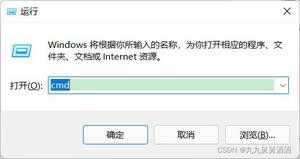MySQL的执行计划与代价模型详细解析

如果是二维码已经过期,大家可以添加简栈文化-小助手的微信号(lastpass4u),然后让他拉大家进群进群。我们保持着小而美的精神,宁缺毋滥。
然后早上群里就有人提了一个问题:
执行计划里面的扫描函数跟执行时间不匹配,比如查询优化器发现,扫描a索引行数更多,所以更慢,因此优化器选择了索引b, 但实际上走b索引的时候比a更慢,走a索引大概是4秒左右,b是8秒。
这个问题激发起了大家的讨论,有的人建议说:
1、这种可以强制指定索引执行的吧
2、这个扫描行数都是预估的不一定准的,能操作shell的话执行analyse table看看。
3、看一下你的index,DDL,explain等等
但提问者明显这些都是已经自己搞清楚了的,他关心的是底层的优化器成本规则等。这类我才意识到EXPLAIN出来的是结果,其实数据库底层本身是有优化器的,而最终选择谁,是否过索引等都是有它的规则的。这其中都涉及到效率与成本问题。
Explain执行计划详解
使用explain关键字可以模拟优化器执行SQL查询语句,从而知道MySQL是如何处理你的SQL语句的,分析你的查询语句或是表结构的性能瓶颈。
Explain执行计划包含的信息
.png)
其中最重要的字段为:id、type、key、rows、Extra。
id字段
select查询的序列号,包含一组数字,表示查询中执行select子句或操作表的顺序
- 三种情况:
- 1、id相同:执行顺序由上至下
.png)
- 2、id不同:如果是子查询,id的序号会递增,id值越大优先级越高,越先被执行
.png)
- 3、id相同又不同(两种情况同时存在):id如果相同,可以认为是一组,从上往下顺序执行;在所有组中,id值越大,优先级越高,越先执行
.png)
select_type字段
查询的类型,主要是用于区分普通查询、联合查询、子查询等复杂的查询
1、SIMPLE:简单的select查询,查询中不包含子查询或者union
2、PRIMARY:查询中包含任何复杂的子部分,最外层查询则被标记为primary
3、SUBQUERY:在select 或 where列表中包含了子查询
4、DERIVED:在from列表中包含的子查询被标记为derived(衍生),mysql或递归执行这些子查询,把结果放在零时表里
5、UNION:若第二个select出现在union之后,则被标记为union;若union包含在from子句的子查询中,外层select将被标记为derived
6、UNION RESULT:从union表获取结果的select
.png)
type字段
访问类型,sql查询优化中一个很重要的指标,结果值从好到坏依次是:
system > const > eq_ref > ref > fulltext > ref_or_null > index_merge > unique_subquery > index_subquery > range > index > ALL
一般来说,好的sql查询至少达到range级别,最好能达到ref
1、system:表只有一行记录(等于系统表),这是const类型的特例,平时不会出现,可以忽略不计
2、const:表示通过索引一次就找到了,const用于比较primary key 或者 unique索引。因为只需匹配一行数据,所有很快。如果将主键置于where列表中,mysql就能将该查询转换为一个const。
3、eq_ref:唯一性索引扫描,对于每个索引键,表中只有一条记录与之匹配。常见于主键 或 唯一索引扫描。
注意:ALL全表扫描的表记录最少的表如t1表
.png)
4、ref:非唯一性索引扫描,返回匹配某个单独值的所有行。本质是也是一种索引访问,它返回所有匹配某个单独值的行,然而他可能会找到多个符合条件的行,所以它应该属于查找和扫描的混合体
.png)
5、range:只检索给定范围的行,使用一个索引来选择行。key列显示使用了那个索引。一般就是在where语句中出现了bettween、<、>、in等的查询。这种索引列上的范围扫描比全索引扫描要好。只需要开始于某个点,结束于另一个点,不用扫描全部索引
.png)
6、index:Full Index Scan,index与ALL区别为index类型只遍历索引树。这通常为ALL块,应为索引文件通常比数据文件小。(Index与ALL虽然都是读全表,但index是从索引中读取,而ALL是从硬盘读取)
.png)
7、ALL:Full Table Scan,遍历全表以找到匹配的行
.png)
possible_keys字段
查询涉及到的字段上存在索引,则该索引将被列出,但不一定被查询实际使用
key字段
实际使用的索引,如果为NULL,则没有使用索引。
查询中如果使用了覆盖索引,则该索引仅出现在key列表中
.png)
.png)
key_len字段
表示索引中使用的字节数,查询中使用的索引的长度(最大可能长度),并非实际使用长度,理论上长度越短越好。key_len是根据表定义计算而得的,不是通过表内检索出的
ref字段
显示索引的那一列被使用了,如果可能,是一个常量const。
rows字段
根据表统计信息及索引选用情况,大致估算出找到所需的记录所需要读取的行数
Extra字段
不适合在其他字段中显示,但是十分重要的额外信息
1、Using filesort
mysql对数据使用一个外部的索引排序,而不是按照表内的索引进行排序读取。也就是说mysql无法利用索引完成的排序操作成为“文件排序”
由于索引是先按email排序、再按address排序,所以查询时如果直接按address排序,索引就不能满足要求了,mysql内部必须再实现一次“文件排序”
.png)
2、Using temporary
使用临时表保存中间结果,也就是说mysql在对查询结果排序时使用了临时表,常见于order by 和 group by
.png)
3、Using index
表示相应的select操作中使用了覆盖索引(Covering Index),避免了访问表的数据行,效率高
如果同时出现Using where,表明索引被用来执行索引键值的查找(参考上图)
如果没用同时出现Using where,表明索引用来读取数据而非执行查找动作
覆盖索引(Covering Index):也叫索引覆盖。就是select列表中的字段,只用从索引中就能获取,不必根据索引再次读取数据文件,换句话说查询列要被所建的索引覆盖。
注意:
a、如需使用覆盖索引,select列表中的字段只取出需要的列,不要使用select *
b、如果将所有字段都建索引会导致索引文件过大,反而降低crud性能
.png)
4、Using where
使用了where过滤
5、Using join buffer
使用了链接缓存
6、Impossible WHERE
where子句的值总是false,不能用来获取任何元祖
7、select tables optimized away
在没有group by子句的情况下,基于索引优化MIN/MAX操作或者对于MyISAM存储引擎优化COUNT(*)操作,不必等到执行阶段在进行计算,查询执行计划生成的阶段即可完成优化
8、distinct
优化distinct操作,在找到第一个匹配的元祖后即停止找同样值得动作
优化器代价模型
指标
- 代价模型:RBO(基于规则的优化)、CBO(基于成本的优化)
- SQL的每一种执行路径,均可计算一个对应的执行代价,代价越小,执行效率越高
CBO方式成本的计算
Total cost = CPU cost + IO costCPU cost计算模型
CPU cost = rows/5 + (rows/10 if comparing key)
CPU cost:
- MySQL上层,处理返回记录所花开销
- CPU Cost=records/TIME_FOR_COMPARE=Records/5
- 每5条记录处的时间,作为1 Cost
IO cost计算模型
IO cost以聚集索引叶子节点的数量进行计算
- 全扫描
IO Cost = table stat_clustered_index_size
聚簇索引page总数,一个page作为1 cost
- 范围扫描
IO Cost = [(ranges+rows)/total_rows]*全扫描IO Cost
聚簇索引范围扫描与返回记录成比率
若需要回表,则IO cost以预估的记录数量进行计算,开销相当巨大
- 二级索引之索引覆盖扫描
- 索引覆盖扫描,减少返回聚簇索引的IO代价
keys_per_block=(stats_block_size/2)/(key_info[keynr].key_lenth+ref_length+1)
stats_block_size/2 = 索引页半满
- IO Cost:(records+keys_per_block-1)/keys_per_block
- 计算range占用多少个二级索引页面,既为索引覆盖扫描的IO Cost
- 二级索引之索引非覆盖扫描
- 索引非覆盖扫描,需要回聚簇索引读取完整记录,增加IO代价
- IO Cost = (range+rows)
- range:多少个范围
对于IN查询,就会转换为多个索引范围查询
- row:为范围中一共有多少记录
由于每一条记录都需要返回聚簇索引,因此每一条记录都会产生1 Cost
Cost模型分析
- 聚簇索引扫描代价为索引页面总数量
- 二级索引覆盖扫描代价较小
- 二级索引非覆盖扫描,代价巨大
- Cost模型的计算,需要统计信息的支持
- stat_clustered_index_size
- ranges
- records/rows
- stats_block_size
- key_info[keynr].key_length
- rec_per_key
- ……
实战如何看日志确定Cost的选择
drop database lyj;create database lyj;
use lyj;
create table t1 (
c1 int(11) not null default "0",
c2 varchar(128) default null,
c3 varchar(64) default null,
c4 int(11) default null,
primary key (c1),
key ind_c2 (c2),
key ind_c4 (c4));
insert into t1 values(1,"a","A",10);
insert into t1 values(2,"b","B",20);
insert into t1 values(3,"b","BB",20);
insert into t1 values(4,"b","BBB",30);
insert into t1 values(5,"b","BBB",40);
insert into t1 values(6,"c","C",50);
insert into t1 values(7,"d","D",60);
commit;
select * from t1;
+----+------+------+------+
| c1 | c2 | c3 | c4 |
+----+------+------+------+
| 1 | a | A | 10 |
| 2 | b | B | 20 |
| 3 | b | BB | 20 |
| 4 | b | BBB | 30 |
| 5 | b | BBB | 40 |
| 6 | c | C | 50 |
| 7 | d | D | 60 |
+----+------+------+------+
执行以下SQL为什么不走索引ind_c2?
mysql> explain select * from t1 where c4=20 and c2="b"G;*************************** 1. row ***************************
id: 1
select_type: SIMPLE
table: t1
type: ref
possible_keys: ind_c2,ind_c4,ind_c2_c4
key: ind_c4
key_len: 5
ref: const
rows: 2
Extra: Using where
set optimizer_trace="enabled=on";
set optimizer_trace_max_mem_size=1000000;
set end_markers_in_json=on;
select * from t1 where c4=20 and c2="b";
mysql> select * from information_schema.optimizer_traceG;
*************************** 1. row ***************************
QUERY: select * from t1 where c4=20 and c2="b"
TRACE: {
......
"potential_range_indices": [ # 列出备选索引
{
"index": "PRIMARY",
"usable": false, # 本行表明主键索引不可用
"cause": "not_applicable"
},
{
"index": "ind_c2",
"usable": true,
"key_parts": [
"c2",
"c1"
] /* key_parts */
},
{
"index": "ind_c4",
"usable": true,
"key_parts": [
"c4",
"c1"
] /* key_parts */
}
] /* potential_range_indices */,
"setup_range_conditions": [
] /* setup_range_conditions */,
"group_index_range": {
"chosen": false,
"cause": "not_group_by_or_distinct"
} /* group_index_range */,
"analyzing_range_alternatives": { # 开始计算每个索引做范围扫描的花费
"range_scan_alternatives": [
{
"index": "ind_c2",
"ranges": [
"b <= c2 <= b"
] /* ranges */,
"index_dives_for_eq_ranges": true,
"rowid_ordered": true,
"using_mrr": false,
"index_only": false,
"rows": 4, # c2=b的结果有4行
"cost": 5.81,
"chosen": false, # 这个索引没有被选中,原因是cost
"cause": "cost"
},
{
"index": "ind_c4",
"ranges": [
"20 <= c4 <= 20"
] /* ranges */,
"index_dives_for_eq_ranges": true,
"rowid_ordered": true,
"using_mrr": false,
"index_only": false,
"rows": 2,
"cost": 3.41,
"chosen": true # 这个索引的代价最小,被选中
}
......
"chosen_range_access_summary": { # 总结:因为cost最小选择了ind_c4
"range_access_plan": {
"type": "range_scan",
"index": "ind_c4",
"rows": 2,
"ranges": [
"20 <= c4 <= 20"
] /* ranges */
} /* range_access_plan */,
"rows_for_plan": 2,
"cost_for_plan": 3.41,
"chosen": true
} /* chosen_range_access_summary */
......
因为ind_c4范围扫描的cost要小于ind_c2,所以索引不走ind_c2
where条件中字段c2和c4换个位置,索引还是不走ind_c2?为什么?
explain select * from t1 where c2="b" and c4=20G;*************************** 1. row ***************************
id: 1
select_type: SIMPLE
table: t1
type: ref
possible_keys: ind_c2,ind_c4,ind_c2_c4
key: ind_c4
key_len: 5
ref: const
rows: 2
Extra: Using where
因为ind_c4范围扫描的cost要小于ind_c2,所以索引不走ind_c2,跟c2和c4的位置无关。验证方法同上。
如下语句,换个条件c2=’c’,为什么可以走索引ind_c2?
mysql> explain select * from t1 where c2="c" and c4=20G;*************************** 1. row ***************************
id: 1
select_type: SIMPLE
table: t1
type: ref
possible_keys: ind_c2,ind_c4,ind_c2_c4
key: ind_c2
key_len: 387
ref: const
rows: 1
Extra: Using index condition; Using where
mysql> select * from information_schema.optimizer_traceG;
*************************** 1. row ***************************
QUERY: select * from t1 where c2="c" and c4=20
TRACE: {
......
"analyzing_range_alternatives": {
"range_scan_alternatives": [
{
"index": "ind_c2",
"ranges": [
"c <= c2 <= c"
] /* ranges */,
"index_dives_for_eq_ranges": true,
"rowid_ordered": true,
"using_mrr": false,
"index_only": false,
"rows": 1, # c2=c 的结果集有1行
"cost": 2.21,
"chosen": true # 这个索引的代价最小,被选中
},
{
"index": "ind_c4",
"ranges": [
"20 <= c4 <= 20"
] /* ranges */,
"index_dives_for_eq_ranges": true,
"rowid_ordered": true,
"using_mrr": false,
"index_only": false,
"rows": 2,
"cost": 3.41,
"chosen": false, # 这个索引没有被选中,原因是cost
"cause": "cost"
}
......
创建复合索引
ALTER TABLE t1 ADD KEY ind_c2_c4(c2,c4);下面语句为什么不走复合索引ind_c2_c4?
explain select * from t1 where c2="b" and c4=20G;*************************** 1. row ***************************
id: 1
select_type: SIMPLE
table: t1
type: ref
possible_keys: ind_c2,ind_c4,ind_c2_c4
key: ind_c4
key_len: 5
ref: const
rows: 2
Extra: Using where
set optimizer_trace="enabled=on";
set optimizer_trace_max_mem_size=1000000;
set end_markers_in_json=on;
select * from t1 where c2="b" and c4=20;
select * from information_schema.optimizer_traceG;
*************************** 1. row ***************************
QUERY: select * from t1 where c2="b" and c4=20
TRACE: {
......
"potential_range_indices": [
{
"index": "PRIMARY",
"usable": false,
"cause": "not_applicable"
},
{
"index": "ind_c2",
"usable": true,
"key_parts": [
"c2",
"c1"
] /* key_parts */
},
{
"index": "ind_c4",
"usable": true,
"key_parts": [
"c4",
"c1"
] /* key_parts */
},
{
"index": "ind_c2_c4",
"usable": true,
"key_parts": [
"c2",
"c4",
"c1"
] /* key_parts */
}
] /* potential_range_indices */,
"setup_range_conditions": [
] /* setup_range_conditions */,
"group_index_range": {
"chosen": false,
"cause": "not_group_by_or_distinct"
} /* group_index_range */,
"analyzing_range_alternatives": {
"range_scan_alternatives": [
{
"index": "ind_c2",
"ranges": [
"b <= c2 <= b"
] /* ranges */,
"index_dives_for_eq_ranges": true,
"rowid_ordered": true,
"using_mrr": false,
"index_only": false,
"rows": 4,
"cost": 5.81,
"chosen": false,
"cause": "cost"
},
{
"index": "ind_c4",
"ranges": [
"20 <= c4 <= 20"
] /* ranges */,
"index_dives_for_eq_ranges": true,
"rowid_ordered": true,
"using_mrr": false,
"index_only": false,
"rows": 2,
"cost": 3.41,
"chosen": true
},
{
"index": "ind_c2_c4",
"ranges": [
"b <= c2 <= b AND 20 <= c4 <= 20"
] /* ranges */,
"index_dives_for_eq_ranges": true,
"rowid_ordered": true,
"using_mrr": false,
"index_only": false,
"rows": 2,
"cost": 3.41,
"chosen": false,
"cause": "cost"
}
......
"chosen_range_access_summary": {
"range_access_plan": {
"type": "range_scan",
"index": "ind_c4",
"rows": 2,
"ranges": [
"20 <= c4 <= 20"
] /* ranges */
} /* range_access_plan */,
"rows_for_plan": 2,
"cost_for_plan": 3.41,
"chosen": true
} /* chosen_range_access_summary */
} /* range_analysis */
}
......
索引ind_c4和ind_c2_c4都是非覆盖扫描,而ind_c4和ind_c2_c4的cost是一样的,mysql会选择叶子块数量较少的那个索引,很明显ind_c4叶子块数量较少。
下面语句为什么又可以走复合索引ind_c2_c4?
explain select c2,c4 from t1 where c2="b" and c4=20G;*************************** 1. row ***************************
id: 1
select_type: SIMPLE
table: t1
type: ref
possible_keys: ind_c2,ind_c4,ind_c2_c4
key: ind_c2_c4
key_len: 392
ref: const,const
rows: 2
Extra: Using where; Using index
set optimizer_trace="enabled=on";
set optimizer_trace_max_mem_size=1000000;
set end_markers_in_json=on;
select c2,c4 from t1 where c2="b" and c4=20;
select * from information_schema.optimizer_traceG;
*************************** 1. row ***************************
QUERY: select c2,c4 from t1 where c2="b" and c4=20
TRACE: {
......
"analyzing_range_alternatives": {
"range_scan_alternatives": [
{
"index": "ind_c2",
"ranges": [
"b <= c2 <= b"
] /* ranges */,
"index_dives_for_eq_ranges": true,
"rowid_ordered": true,
"using_mrr": false,
"index_only": false,
"rows": 4,
"cost": 5.81,
"chosen": false,
"cause": "cost"
},
{
"index": "ind_c4",
"ranges": [
"20 <= c4 <= 20"
] /* ranges */,
"index_dives_for_eq_ranges": true,
"rowid_ordered": true,
"using_mrr": false,
"index_only": false,
"rows": 2,
"cost": 3.41,
"chosen": false,
"cause": "cost"
},
{
"index": "ind_c2_c4",
"ranges": [
"b <= c2 <= b AND 20 <= c4 <= 20"
] /* ranges */,
"index_dives_for_eq_ranges": true,
"rowid_ordered": true,
"using_mrr": false,
"index_only": true, # 索引覆盖扫描
"rows": 2,
"cost": 3.41,
"chosen": false,
"cause": "cost"
}
] /* range_scan_alternatives */,
"analyzing_roworder_intersect": {
"intersecting_indices": [
{
"index": "ind_c2_c4",
"index_scan_cost": 1.0476,
"cumulated_index_scan_cost": 1.0476,
"disk_sweep_cost": 0,
"cumulated_total_cost": 1.0476,
"usable": true,
"matching_rows_now": 2,
"isect_covering_with_this_index": true,
"chosen": true
}
] /* intersecting_indices */,
"clustered_pk": {
"clustered_pk_added_to_intersect": false,
"cause": "no_clustered_pk_index"
} /* clustered_pk */,
"chosen": false,
"cause": "too_few_indexes_to_merge"
} /* analyzing_roworder_intersect */
} /* analyzing_range_alternatives */
} /* range_analysis */
}
] /* rows_estimation */
},
{
"considered_execution_plans": [
{
"plan_prefix": [
] /* plan_prefix */,
"table": "`t1`",
"best_access_path": {
"considered_access_paths": [
{
"access_type": "ref",
"index": "ind_c2",
"rows": 4,
"cost": 2.8,
"chosen": true
},
{
"access_type": "ref",
"index": "ind_c4",
"rows": 2,
"cost": 2.4,
"chosen": true
},
{
"access_type": "ref",
"index": "ind_c2_c4",
"rows": 2,
"cost": 1.4476,
"chosen": true
},
{
"access_type": "scan",
"cause": "covering_index_better_than_full_scan",
"chosen": false
}
] /* considered_access_paths */
} /* best_access_path */,
"cost_for_plan": 1.4476,
"rows_for_plan": 2,
"chosen": true
}
......
因为语中ind_c2_c4是索引覆盖扫描,不需要回表,代价较小。
总结
**我们看执行计划(Explain)仅仅只是结果,而看代价模型(Cost)才是过程。**如果我们真的想了解数据库是如何优化我们的SQL或者真的是如何执行的,需要深入深入的理解底层才行。
参考地址
- https://blog.csdn.net/gua___gua/article/details/50819629
- https://blog.csdn.net/qingsong3333/article/details/77170831
- https://keithlan.github.io/2015/07/14/mysql_group_order_limit/
- [http://dbase.cc/2017/10/24/mysql/MySQL-性能优化最佳实践课程学习/09-MySQL-性能优化最佳实践 /](http://dbase.cc/2017/10/24/mysql/MySQL-性能优化最佳实践课程学习/09-MySQL-性能优化最佳实践 /)
- https://blog.csdn.net/wuseyukui/article/details/71512793
如果大家喜欢我的文章,可以关注个人订阅号。欢迎随时留言、交流。
以上是 MySQL的执行计划与代价模型详细解析 的全部内容, 来源链接: utcz.com/z/513643.html








